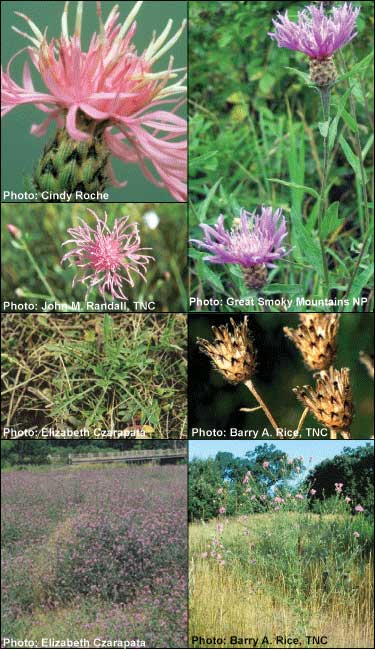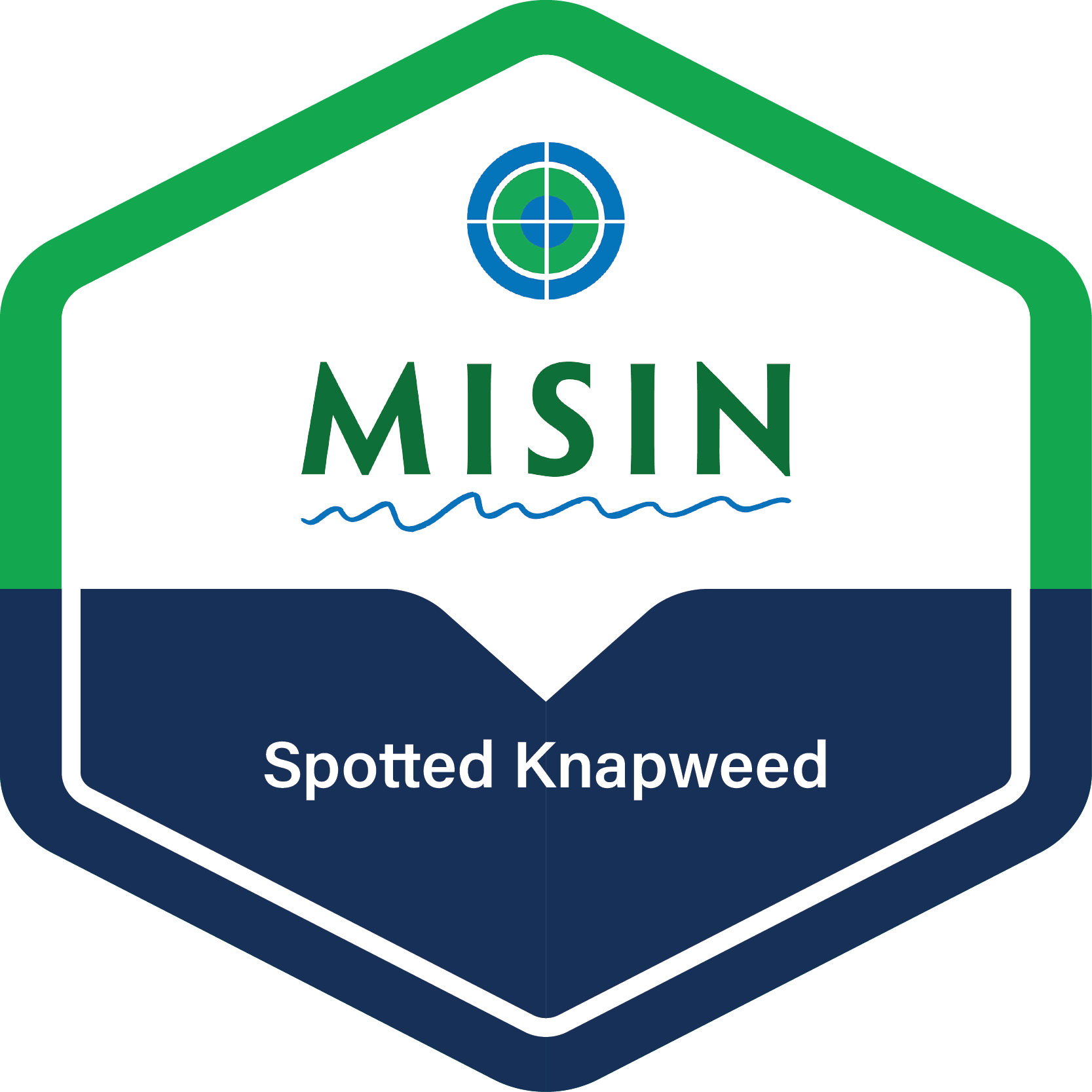Spotted knapweed (Centaurea stoebe)
 Synonyms: Centaurea maculosa
Synonyms: Centaurea maculosaCommon Names: Bushy knapweed
Description: Likely introduced to North America in an alfalfa shipment and was first recorded in Washington state in the 1800s. It poses a serious threat to western rangelands. This species is listed under Regulation No. 715 - Seed Law Implementation as a prohibited noxious weed by the Michigan Department of Agriculture.
Habit: Short-lived herbaceous biennial or perennial reaching 0.6-1.2 m (2-4 ft).
Leaves: All leaves pale or grayish green with rough fine hairs; basal leaves form a rosette which may persist for up to four years; basal and lower stem leaves up to 15 cm (6 in) long; leaflets deeply divided to irregularly lobed; tapered at both ends; upper stem leaves smaller (2-7 cm in length) with few or no lobes.
Stems: 1-7 upright rough stems that branch towards the upper half of the plant.
Flowers: Numerous, pink-purple, terminal solitary flowers at the end of each stem, phyllaries with dark tips and fringed margins; bloom from July through September.
Fruit and seeds: Small brown wind-dispersed seeds, germinate throughout the growing season; remain viable for up to nine years.
Habitat: Roadsides and right-of-ways, old fields, pastures, undisturbed dry prairies and oak and pine barrens; also appears on dunes and beaches during low water conditions.
Reproduction: By prolific seed production and to a lesser extent by lateral roots.
Similar species: Russian knapweed (Centaurea repens), diffuse or white-flowered knapweed (C. diffusa), black knapweed (C. nigra), and yellow star thistle (C. solstitialis). The best way to distinguish spotted knapweed is by the dark tips and fringed margins of its phyllaries, although these species are also problems.
Monitoring and rapid response: Monitor well-drained, sunny sites; knapweed is recognizable throughout the growing season. Wear gloves, long pants and sleeves to prevent skin contact. Begin control efforts in highest quality areas; pull or dig plants in small infestations and remove entire root. Remove flower/seed heads from site. Foliar herbicide application of rosettes is most effective before the stem elongates. Continue control efforts until the seed bank is exhausted. Credits: The Michigan Natural Features Inventory (MNFI) has partnered with MISIN to provide the information in this fact sheet. Species images and/or information were used with permission from "A Field Identification Guide to Invasive Plants in Michigan's Natural Communities" and "A Field Guide to Invasive Plants of Aquatic and Wetland Habitats for Michigan.
Common Name: | Spotted knapweed |
Scientific Name: | Centaurea stoebe |
Family: | Asteraceae (Aster) |
Duration: | Biennial, Perennial |
Habit: | Herbs |
USDA Symbol: | CESTM |
 View Species Course |
|
